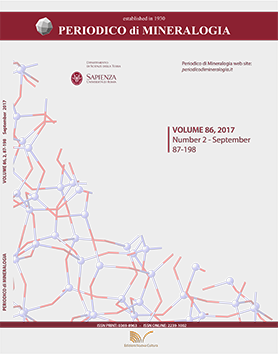The effect of degassing and volatile exsolution on the composition of a trachybasaltic melt decompressed at slow and fast rates
DOI:
https://doi.org/10.2451/2017PM691Keywords:
, magma degassing, volatile exsolution, devolatilization, disequilibrium decompression, magma ascent, trachybasaltAbstract
It is widely accepted that, for the correct interpretation of bulk rock compositions, degassing process controlling both loss of magmatic volatiles and significant changes in the contents of volatile chemical species must be considered. The continuous degassing experiments presented in this study attempt to determine the absolute and relative change in abundances of volatile components in the melt at shallow levels, simulating what might occur during slow and fast ascent of magma from depth without crystallization. We performed disequilibrium decompression experiments using as starting melt a bubble-free but volatile-bearing trachybasalt. The charges were isothermally decompressed at 1150 °C from 400 MPa down to 50 MPa at rates of 0.01 MPa/s and 1 MPa/s. Results demonstrate that degassing of 1 wt.% H2O is not enough to induce melt compositional changes as well as H2O supersaturation in the trachybasaltic melt. In contrast, the minimum H2O threshold to observe Cl, B, and Li devolatilization corresponds to 3 wt.% H2O and supersaturation is attained at the fast decompression rate of 1 MPa/s. An increase of CO2 up to 0.3 wt.% do not change the partitioning behaviour of these chemical species between vapor and trachybasaltic melt. Moreover, CO2 degassing is less efficient with respect to H2O transfer from the melt into the vapor phase. As a consequence, the trachybasaltic melt is preferentially supersaturated in CO2 with decreasing pressure. Although it is not excluded that the value of fO2 in the decompressed melt may locally change towards the bubble surface, the bulk melt remains buffered to its original redox state upon disequilibrium degassing conditions.


